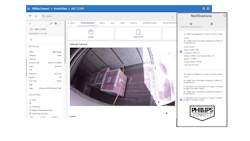Key takeaways:
- Small route optimizations are increasingly important for competitive fleet operations.
- Analyzing stop times and trailer unloading activity is one unusual source of data for route optimization.
- As optimizations become more specific, fleets will need to consider more granular route data tooled for specific operations, such as construction or waste management.
Fleet operations today generate and consume incomprehensible volumes of data on a daily basis. Real-time data from trucks, tractors, trailers, and drivers can overwhelm even the most tech-savvy carriers. But knowing which of those data points matter most can vastly improve a fleet’s routing efficiency.
“This industry has drowned in data for decades,” Brian Antonellis, SVP of fleet operations at Fleet Advantage, told FleetOwner. “But, truly told, it piles up in the system.”
A typical telematics system will send up to 30 data points every five seconds to five minutes, according to Tim Haynes, VP of digital and customer data for Penske Transportation Solutions.
That data still has great potential for routing. Although the fire hose of information may feel overwhelming at times, fleets can always start on the lower rungs of an optimization ladder and work their way up to more advanced rungs.
See also: How Oxy built a winning private fleet
Basic optimization might mean incorporating customers’ preferred delivery times or steering away from inclement weather. Fleets may begin aggregating the data through transportation management systems or even a bespoke in-house platform such as the one developed by Quality Custom Distribution.
Eventually, however, further optimization needs more specific data. The fleet’s specific operations become more relevant, and even the trailer becomes an essential source of information for routing.
Optimization means data
Route planning can better analyze the likely costs and optimizations of countless possible routes. As Antonellis defines it, “It’s understanding where you’re running and your valuable miles versus invaluable miles.”
The practice is even more valuable with recent improvements in technology and data management. The growing use of telematics systems and electronic logging devices over the last decade generated plenty of location and operational data. But while acquiring data was easy for a long time, fleets couldn’t always afford to put the numbers to work. The overhead cost of in-house data analysis to save pennies every few miles was not always worthwhile.
“People recognize that, left to their own devices, drivers will take what they perceive to be the easiest route, not the most efficient,” Antonellis said. “But to hire a large team to grind the data all the time and figure that out—it’s expensive and didn’t really seem like it was worth it.”
As crafted algorithms and machine learning architectures find more applications in transportation, data analysis is becoming easier for carriers. And as rising operating expenses threaten margins, those pennies on the mile make a much bigger difference.
“In a time that we’re in now, where trucking is slightly depressed, everybody’s looking for areas of efficiency and to improve what they’re doing,” Antonellis said.
Fleets are optimizing routes for various outcomes: to find the best possible fuel pricing, improve delivery time, cut idle time, reduce driver fatigue, avoid congestion, and any other goal an executive can imagine.
Trailer data improves dispatching
One unlikely source of data for optimizing routing and dispatching is the trailer—when it’s stopped.
The use of smart trailer technology extends beyond asset tracking. It can help inform the efficiency of loading and unloading, as well as dynamic less-than-truckload dispatching.
“You can add more intelligence into route optimization, and smart trailer technology is one of those paths,” Mark Wallin, general manager and SVP of products for Phillips Connect, told FleetOwner.
Phillips Connect utilizes smart trailer data to supplement traditional telematics, enhancing fleets’ operations and maintenance. It offers more than basic trailer tracking, bringing real-time information on liftgate batteries, tires, brakes, and more. The company’s sensors and dedicated cameras can capture detailed trailer data such as door open/close events, trailer fullness, and unloading activities. Now utilizing AI tools, the company can even use cameras to infer the trailer’s total floor space and available volume.
Investigating stop time
Phillips Connect does not provide its own route optimization solution, but its solutions are used more and more to enhance dynamic dispatching and route management. The company’s trailer data is particularly useful for optimizing stops in less-than-truckload operations.
“When you look at optimization, there’s only a few knobs,” Wallin explained. “How many customers, the priorities, the route, and stop time … The more you’re able to understand about that stop time, the more insights you have.”
Imagine an LTL fleet using telematics data to observe its average stop times at customer destinations. The average stop took 20 minutes, but some stops took 30 or even 45 minutes. In the past, learning more about the longer stops might have required the fleet to individually ask drivers or customers about the events of each stop, resulting in the fleet receiving only vague, qualitative responses for a data-focused problem.
“Before this technology was available, when I would work with a food and beverage company, all we had was a stop, and I knew it took 30 minutes,” Wallin said. “It drove me nuts, not knowing what was happening during those 30 minutes.”
Precise monitoring of the trailer can illuminate the dark corners of stops. Maybe the fleet’s driver stops at the destination, ready to unload, but no one opens the trailer doors for 30 minutes, Wallin suggested. That is an opportunity for investigation and improvement.
“We’re going beyond just the stop times; we’re giving them insights. What were they doing during that stop?” Wallin asked. “Now I can tell you from when you stopped to when the doors on the trailers were opened to when you start unloading the trailer.”
Granular trailer data can show how long unloading took and even share pictures of the unloading process. Phillips Connect distributes its data through APIs, allowing integration with any number of transportation management systems.
Smooth dynamic dispatching
For one of the company’s LTL customer fleets—a major beverage company—flexible dispatching required slow, manual communication. After receiving a new order, the fleet needed to call drivers to ask where they were and if they had space for an additional order. Integrating trailer monitoring software into a fleet management system helped smooth out the fleet’s routing and dispatching.
“Now, once they’d integrated that into the software, it’s all done by the software, optimizing who can pick them up with the capacity: They’re 30% full, they have two orders left, and where they’re located,” Wallin explained.
Routing for specific duty cycles
Route optimization lives and breathes data, but some data types are more plentiful than others. Weather data can be relatively easy to gather; collecting information about private roads’ size and weight restrictions is tougher.
NextBillion.ai is a route optimization provider particularly suited for multi-stop operations. The company claims that what sets it apart is that it supports more granular operational needs.
Most route optimization solutions are designed for simpler use cases, utilizing public roadway information. NextBillion said it uses that information but also supports more challenging data applications for segments including construction, oil and gas, and bulk transport.
In applications like construction, the weight and dimensions of the truck can more often impact their available routes. Routes for oil and gas regularly take place on private estates with less available road information. For waste fleets, optimum routes might depend on whether their trucks use manual or automated trash loading.
Fine-tuned for crisis transportation
OK Ride Care is an Oklahoma-based secure car service that primarily provides agency-to-agency mental health and substance abuse disorder transport, focusing on consumer empowerment, wellness, recovery, and human dignity. The company provides crisis transportation in partnership with the Oklahoma Department of Mental Health and Substance Abuse Services, local hospital systems, mental health facilities, law enforcement, and more.
Ride Care began in 2021, servicing 55 state counties with 10 cars. Today, the company services the entire state of Oklahoma—and parts of Kansas and Louisiana—with a growing fleet of 90 vehicles and drivers. The company began to accommodate scheduled services in late 2023, helping people travel to and from appointments. They quickly identified a need for route optimization.
“One minute, our staff was pasting trips together on sticky notes, and the next day, they were working half the night to make the trips work,” David Roberts, CEO of Ride Care, told FleetOwner. “We immediately started seeking processes and platforms that would leverage our workforce more effectively.”
There was, however, a challenge in finding the right platform for Ride Care because of its unique duty cycle. A few months later, the company started working with NextBillion.ai.
“We had needs and constraints that NextBillion hadn’t dealt with before, and their support staff made changes that helped us accomplish the goal of moving people to get the help they need,” Roberts said.
Ride Care was able to work with NextBillion to improve routing, tailored specifically for their sensitive operations.
“Now we have a team of people who meet at 7 p.m. to collate and optimize the next day’s trips,” Roberts explained. “In less than two hours, our drivers have their assignments, and they start picking up their first riders by 6 a.m. the next morning.”
With the help of technological capabilities like route optimization, Ride Care continues to grow its operations today, facilitating between 4,000 and 6,000 transports each month.
AI in route optimization
Route optimization means data analysis, which means artificial intelligence is increasingly important for finding the best routes.
Though the term AI is nebulous, most heavy-duty truck fleets are now adopting the technology, according to a recent Fleet Advantage survey on AI adoption among Class 8 fleets. Of 2,500 fleet respondents, 61% have a “partial adoption” of AI in their operations, and 38% are exploring “limited experimentation.”
By far the most popular area of AI utilization, according to the survey, is route planning: 43% of respondents used AI for route optimization.
“As good as it gets, it almost gets that bad. We’re just coming out of the bottom—everybody’s looking for efficiencies,” Brian Antonellis, SVP of fleet operations at Fleet Advantage, said. “The only way you can get through the challenging time is to innovate your way out.”
According to a 2024 Penske survey, most shippers and 3PLs feel that using AI for route optimization is highly important.
Machine learning applications have great potential for pickup and delivery, where irregular routes can be optimized without delay. One application of AI-powered route planning is to compare the actual routes from trucks’ telematics devices against the routing program’s original plan. A program can analyze whether the truck diverted from its plan, any inefficiencies in the route, the effects of local traffic patterns at certain times, and more.
About the Author
Jeremy Wolfe
Editor
Editor Jeremy Wolfe joined the FleetOwner team in February 2024. He graduated from the University of Wisconsin-Stevens Point with majors in English and Philosophy. He previously served as Editor for Endeavor Business Media's Water Group publications.





